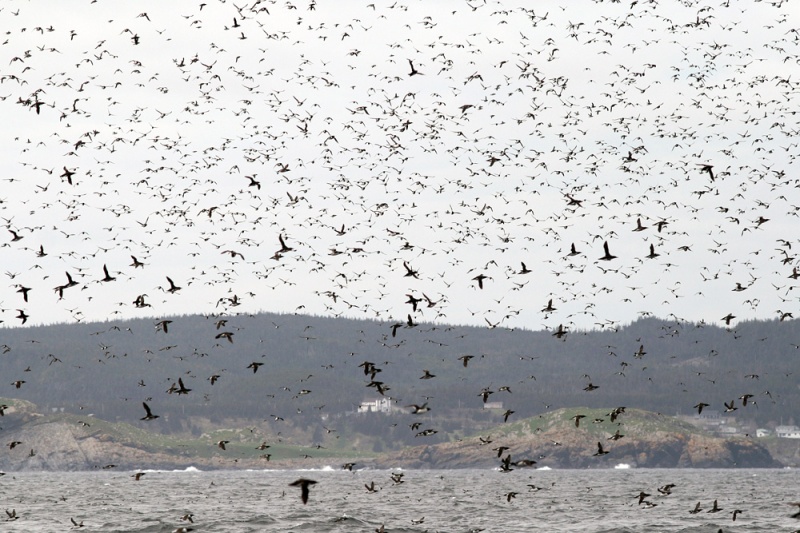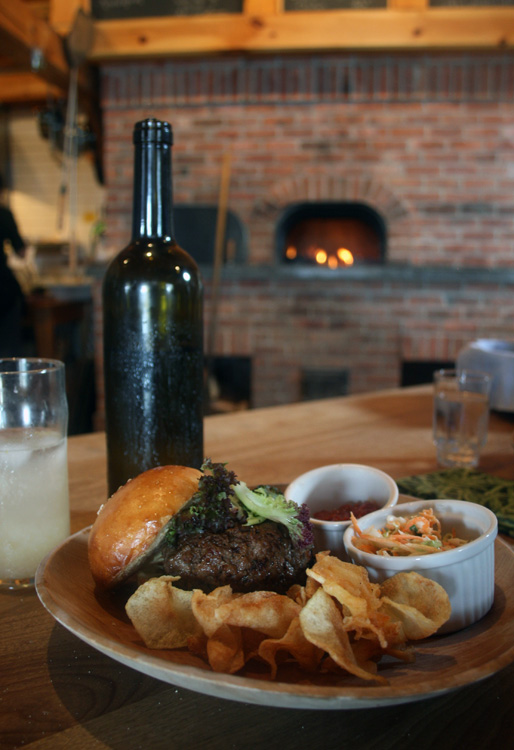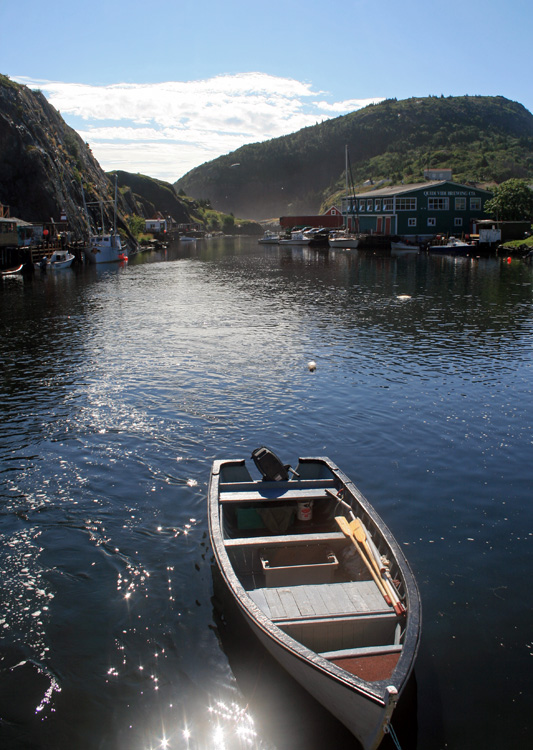Whoa … does time ever fly?!?! It’s hard to believe another year has come and gone … but not without lots of adventures. The year 2017 was a very exciting one here at BirdTheRock – I was blessed beyond words to share the natural wonders of Newfoundland & Labrador with so many visitors, travel to amazing places both near and far, and experience countless special moments along the way. I have so much to tell … but as they say “a picture is worth a thousand words“, and maybe that’s the best way to share this long overdue summary of the year that was. Below are 17 photos from 2017; chosen to represent just a fraction of the many, many highlights from my year.
I apologize for my lapse in blog posts over the last few months – but be sure to follow me on Facebook, Twitter and/or Instagram for more regular highlights and often daily updates from ongoing tours! I’ll continue to update this blog as often as I can 😉

Like every year, 2017 started off with some excellent winter birding right here in eastern Newfoundland. I had the pleasure of sharing great winter birds such as Dovekie, Thick-billed Murre, White-winged Crossbill, Bohemian Waxwing, Boreal Chickadee and friendly Gray Jays with a number of visiting birders. This photo was taken during the annual WINGS Birding Tour – and you can read more about that in an earlier blog post here.

I also joined Instagram this past winter – yet another great way to share photos and highlights with people from all over the world. THIS photo of a Dovekie (taken several winters ago) turned out to be my most popular photo of 2017 – not surprising given how much people tend to love these cute little seabirds! Newfoundland is the most reliable place in North America to see Dovekie and a big part of the reason why birders visit here in winter.

I was honoured this year to earn the support of Kowa Optics, and upgraded my worn-out gear with their top quality equipment. I’ve had so much fun using this Prominar TSN-883 spotting scope and Genesis binoculars – and sharing the experience with so many of my guests. The optics are amazing! Stay tuned for an upcoming review of this Kowa swag here on the blog very soon.

In March, I joined Kisserup International Trade Roots and a handful of other Canadian birding and eco-tourism experts on an exploratory “mission” to Honduras (Read the two-part blog series and see LOTS of photos here!!). What I discovered was an incredibly beautiful place with wonderful people, amazing nature and especially birds, and so many opportunities for visiting birders and nature-lovers to soak it all in. Oh … AND we observed more than 250 species of birds along the way! I’m scheming up a Honduras birding tour for the near future – so stay tuned for details!! (Photo: Spectacled Owl, Rio Santiago Nature Resort, Honduras)

I returned home from Honduras to find Newfoundland in the cold, icy grip of the Arctic. Prolonged northerly winds were pushing Arctic pack ice much further south than usual – encasing the entire northern and eastern coasts, and even wrapping around to fill bays and coves in the southeast. While spring pack ice was a normal part of my childhood growing up on the northeast coast, it rarely reached this far south and some communities were seeing it for the first time in living memory. With the ice came lots of seals (including more northerly Hooded Seals), Polar Bears and even a very wayward Arctic Fox to far-flung places around the island. Birds were impacted too — ducks, loons and other seabirds were corralled into small sections of open water waiting for the ice to move off. The ice lingered so long on parts of the northeast coast that fisheries were delayed or even canceled, adding a very human aspect to this unusual event.

Late winter and early spring can be a challenging time for birding – many of the winter species are beginning to move on, and migration has yet to start. But there are always wonderful things to see, and a mid-March excursion to Cape Race with one group of intrepid clients paid off with this — great looks at one of their “target” birds! This Willow Ptarmigan, sporting transitional plumage, allowed us to get up-close-and-personal right from the car!

Another highlight of early spring was an exceptional few days of gull-watching in St. John’s. Not only did the elusive Yellow-legged Gull (which can be seen here sporadically most winters) become a very regular visitor at Quidi Vidi Lake, but a Slaty-backed Gull was also discovered there. The two images above were captured just minutes (and metres) apart … two very rare gulls entertaining some very happy birders! (March 25, 2017)

The pack ice may have receded as spring wore on, but other visitors from the north took their place. Newfoundland had an excellent iceberg season in 2017 – and one of the early highlights was this mammoth berg that perched itself in Ferryland (an hour south of St. John’s). Photos of this iceberg (including my own) went “viral”, showing up in newsfeeds, newspapers and TV newscasts all over the world. It was just one of many awesome bergs I saw this year … including with many of my clients!

While there was no “huge” influx of European rarities into Newfoundland this spring, there was also no shortage. This European Golden Plover was one of several reported in early May. I was also fortunate to see a Ruff, two Eurasian Whimbrel, and two Common Ringed Plovers this year – AND happy to say that I had clients with me for each and every one! How’s that for good birding?!?!

Perhaps the most exciting bird of the spring (or even year) also came from Europe. This COMMON SWIFT was discovered by Jeannine Winkel and Ian Jones at Quidi Vidi Lake, St. John’s on May 20 – just the second record for Newfoundland and one of only a handful for all of North America. Cool, damp weather worked in our favour throughout the week, with this extremely rare bird sticking around until May 26 and entertaining both local birders and a number of “ABA listers” who flew in from all over North America to see it. Amazing! (Photo: May 23, 2017)

Spring slipped into summer, which of course is the busiest time of year for BirdTheRock Bird & Nature Tours. I was fortunate to host dozens of visiting birders and nature-lovers throughout the summer, sharing the many wonderful sights and spectacles that our province has to offer. This photo of Northern Gannets was taken during the excellent Eagle-Eye Tours “Grand Newfoundland” trip – one of many times I visited Cape St. Mary’s Ecological Reserve this year. This particular tour is a great way to experience the birding and natural highlights of Newfoundland, from St. John’s to Gros Morne National Park and many points in between. I look forward to leading it again in 2018! (Read more about this tour in a blog post from 2016.)

Of course, it’s not “always” just about the birds. During every tour or outing, I make time to stop and enjoy the abundance of other gems that nature has in store. I especially like the wild orchids of mid-summer, and this Showy Ladyslipper was one of nine species we encountered during a fantastic Massachusetts Audubon tour. What an awesome time we had!

Of course, summer can’t be ALL work and no play! (Who am I kidding – my work is always fun!) I made sure to steal some time to explore both new places and old favourites with my family – including the rugged coastlines of Notre Dame Bay where I grew up and my passion for nature first took root!

In August, I had the pleasure of once again leading the Eagle-Eye Tours trip to New Brunswick & Grand Manan. While there are many wonderful places and birding experiences on this tour, one key highlight is seeing the huge gathering of Semipalmated Sandpipers in the world-famous Bay of Fundy. More than 3/4 of the world’s population stop here during migration, and flocks of tens of thousands can often be found roosting on the narrow beach at high tide or swirling over the water. This was my third time leading this tour, and you can read more about it on an earlier blog post here.

As summer fades to fall in Newfoundland, I often turn my attention to migration and the opportunity to find wayward and locally rare species right here on “the rock”. One of the most interesting birds was this very late empidonax flycatcher that showed up in November — well beyond the expected date of normal migrants and reason enough to scrutinize it. Originally found by crack birder Lancy Cheng, I arrived soon after and spent several hours trying to capture diagnostic photos amid the fleeting glimpses it gave. Based on photos from several birders and Lancy’s very important sound recording, this bird was eventually identified as Newfoundland’s first ever Willow Flycatcher! Chalk one up for the perseverance and cooperation of our local birding community!

Winter also started off with a bang, when veteran birder Chris Brown discovered the province’s first Eared Grebe on December 1. Time for birding can be tough to come by for me at this busy time of year – but I managed to sneak in a “chase” to see this mega-rarity. Read more on my blog post here.

My birding year ended on yet another high note: leading my third Eagle-Eye Tours adventure of the year – this time in Trinidad & Tobago! This was my second time leading this amazing tour, and I admit to being totally enamored with this beautiful place. The lush forests, open grasslands, intriguing coastlines … and, of course, the incredible birds and wildlife! This Guianan Trogon was just one of more than 200 species we encountered during the trip – many of which were equally stunning. Stay tuned for an upcoming blog post about my most recent trip — but in the meantime you can check out this three-part series from my last adventure in Trinidad & Tobago. And better yet – join me when I return at the end of 2018!
What a fantastic year! Thanks to the many friends and visitors who shared all these special moments (and many more!) with me in 2017. I’m excited for 2018 and can’t imagine what wonderful experiences it might have in store! Why not join me to find out for yourself?!?!
































































































































